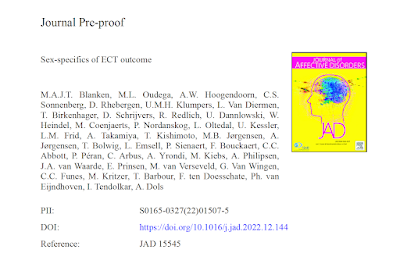Burden of TRD: New Population-Wide Study From Sweden

Out on PubMed, from Swedish investigators, is this study: Association of Treatment-Resistant Depression With Patient Outcomes and Health Care Resource Utilization in a Population-Wide Study. Lundberg J, Cars T, Lööv SÅ, Söderling J, Sundström J, Tiihonen J, Leval A, Gannedahl A, Björkholm C, Själin M, Hellner C. JAMA Psychiatry. 2022 Dec 14. doi: 10.1001/jamapsychiatry.2022.3860. Online ahead of print. PMID: 36515938 The abstract is copied below: Importance: The totality of the societal and individual impact of treatment-resistant depression (TRD) is unknown, as is the potential to prognosticate TRD. The generalizability of many observational studies on TRD is limited. Objective: To estimate the burden of TRD in a large population-wide cohort in an area with universal health care by including data from both health care types (psychiatric and nonpsychiatric) and, further, to develop a prognostic model for clinical use. Design, setting, and participants: This cohort study, a population-









